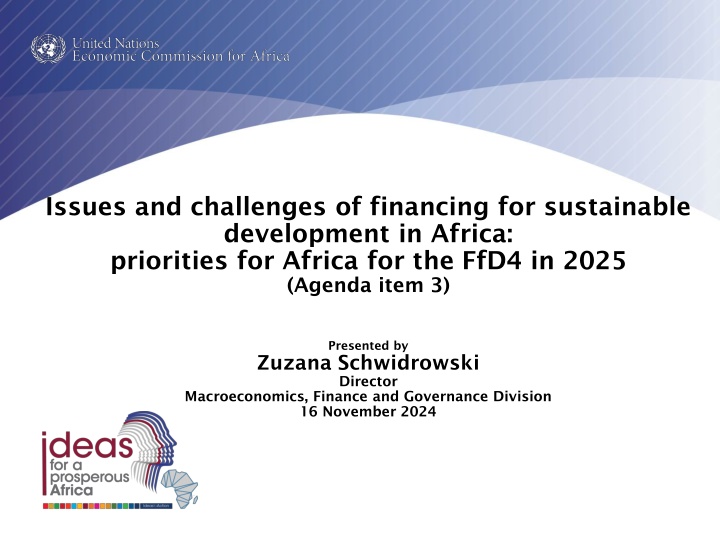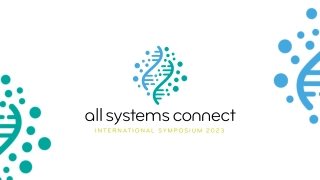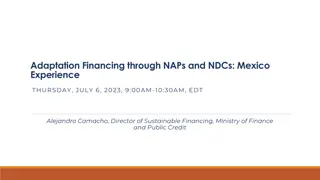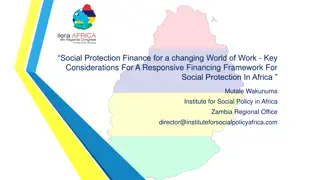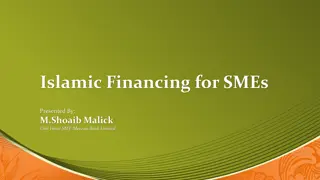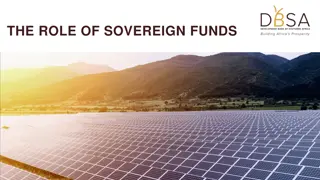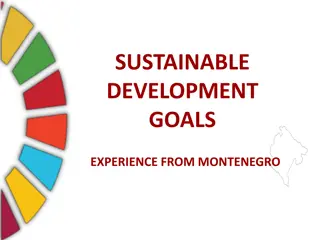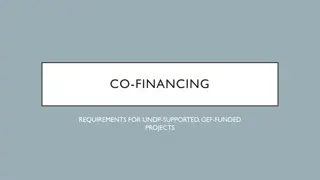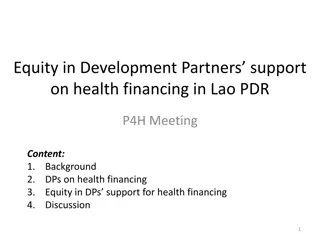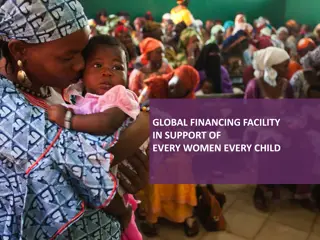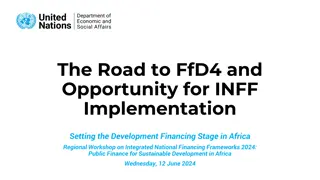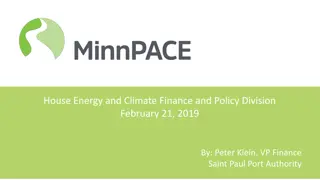Financing Challenges for Sustainable Development in Africa: Priorities for FfD4 2025
Addressing the financing gaps for sustainable development in Africa is crucial, especially in the face of global economic shocks and climate threats. The continent faces significant deficits in tax revenue, high levels of public debt, and a growing need for climate financing. A comprehensive approach is essential to bridge the funding shortfalls and achieve the SDGs by 2030.
Download Presentation

Please find below an Image/Link to download the presentation.
The content on the website is provided AS IS for your information and personal use only. It may not be sold, licensed, or shared on other websites without obtaining consent from the author.If you encounter any issues during the download, it is possible that the publisher has removed the file from their server.
You are allowed to download the files provided on this website for personal or commercial use, subject to the condition that they are used lawfully. All files are the property of their respective owners.
The content on the website is provided AS IS for your information and personal use only. It may not be sold, licensed, or shared on other websites without obtaining consent from the author.
E N D
Presentation Transcript
Issues and challenges of financing for sustainable development in Africa: priorities for Africa for the FfD4 in 2025 (Agenda item 3) Presented by Zuzana Schwidrowski Director Macroeconomics, Finance and Governance Division 16 November 2024
A glimpse into the prevailing macroeconomic status Recent global shocks including the Covid-19 pandemic, the Russia-Ukraine war and climate threats have worsened the already constrained and fragile Africa s financing landscape Progress gap between the current status and the target of Agenda 2030 is huge Millions of people are deprived of the basic necessities of a quality life Growth in Africa remains below the average recorded prior to the COVID-19 pandemic with low quality which is insufficient to meet the SDGs and Agenda 2063 targets The average tax-to-GDP ratio in Africa is still below the pre- pandemic level of 15.8% Fiscal deficits remains above their pre-pandemic levels and are projected to reach 5.0% of GDP in 2024 Public debt reached 67.3% of GDP in 2024. As of April 2024, 7 African countries were in external debt distress, and at a high risk of debt distress.
Size of the Africas SDG financing gap An upcoming ECA study found that total SDG financing needs for all 54 African countries in 2030 range from 1.7 to 21 trillion USD Based on projections of GDP, expenditure, and population, the analysis shows that Africa will require an additional 670 to 760 billion USD in 2030 to meet the lower-bound investment need of 1.7 trillion USD or 12% to 17% of the continent's projected GDP for 2030 Even under optimistic domestic growth scenarios, 35 countries will still fall short of meeting the SDG investment requirement by 2030 Meanwhile, development aid to Africa declined from 33.6% in 2021 to 25.6% of total aid in 2022 Moreover, there is low DRM potential: low tax to GDP ratio, a low tax base, high debt, low savings and investment, and a high prevalence of IFFs At the same time, continued multifaceted global crisis in coming years implies a continued need for various fiscal support measures.
Concomitantly, Africas climate financing needs are growing and continue to be severely underfunded Africa s estimated costs to implement NDCs (2020 2030) vary by sub-regions About US$3 trillion USD is needed to implement NDCs in Africa Financing gap of US$250 billion per year remains 10% of Africa s 2022 GDP needs to be mobilized above and beyond current flows every year until 2030 Source: Climate Policy Initiative, 2022.
Geographic distribution of climate financing is greatly unequal Global: green bond issuance, 3-year average (percent) Regional breakdown of total climate finance, 2019-20 average (US$ millions) 2017-2019 (Total: US$202 bn) 0.23%, Africa 99.77%, Rest of World 2020-2022: (Total: US$428 bn) 0.13%, 99.87%, Rest of World Source: Climate Bonds
Potential sources of financing for the SDGs Source: ECA, 2024 Source: ECA, 2024 We need to tap into DRM efforts while ensuring a reform in the GFA
Enhanced DRM for sustainable financing for development in Africa Broadening the tax base and improving the efficiency and effectiveness of the current system Strengthening institutional capacity by improving the design of core domestic taxes, including carbon taxation for reducing emissions and promoting a green transition African Governments need to revisit tax expenditures to examine the costs and benefits of the associated tax incentive provisions against the intended objectives Digitalizing tax collection systems and taxing the digital economy A strong political commitment and a whole-of-system approach to curb IFFs An effective debt management framework to prevent deviation, leakages and inefficiencies in the use of debt Deepening of African domestic financial market is warranted.
Scaling up development finance - Africa needs fair share of SDRs In 2021, the IMF injected $650 billion - in SDRs - into the global economy. The 54 countries of the African continent received $33 billion. By contrast, the seven largest economies of the world, the G7, received $277 billion.
Debt restructuring mechanism beyond DSSI extension Reform of G20 Common Framework The DSSI lacked the required enforcement mechanisms that could ensure equitable treatment across creditor types in debt relief A comprehensive debt restructuring including the private sector and multilateral creditors with creditor parties accepting losses on equitable terms could enhance countries credit profiles Debt relief that goes beyond DSSI & the Common Framework and includes MICs is needed for sustainable recovery and equity.
Global financial architecture reforms for sustainable development in Africa Begin negotiations under the UNTC Framework Convention with all States members of Africa for fair taxing rights Call upon the Africa high-level working group for the global financial architecture reform to serve the interests of Africa Enhance the Common Framework's effectiveness and promote equitable and timely debt restructuring Scale up development finance for Africa to a level where sustainable development can be attained Enhance the representation of Africa, by ensuring the improved governance of the international financial institutions Revitalization of the Group of 20 Debt Service Suspension Initiative Debt for climate swaps and other innovative tools.
What should different stakeholders do African Government International Community Pan African Institutions At national level At national level At regional and global levels At regional and global levels At regional and global levels
